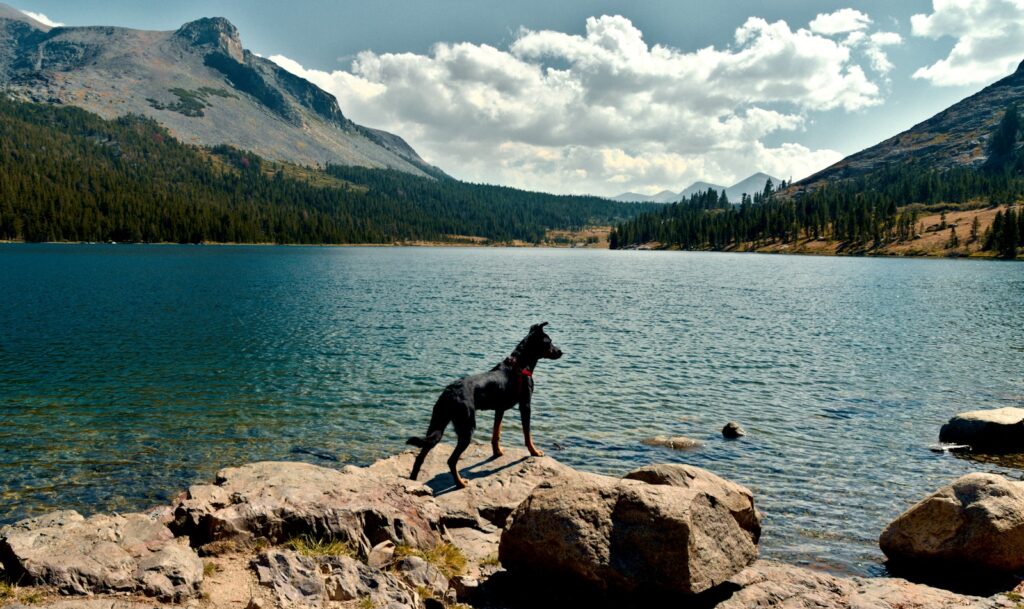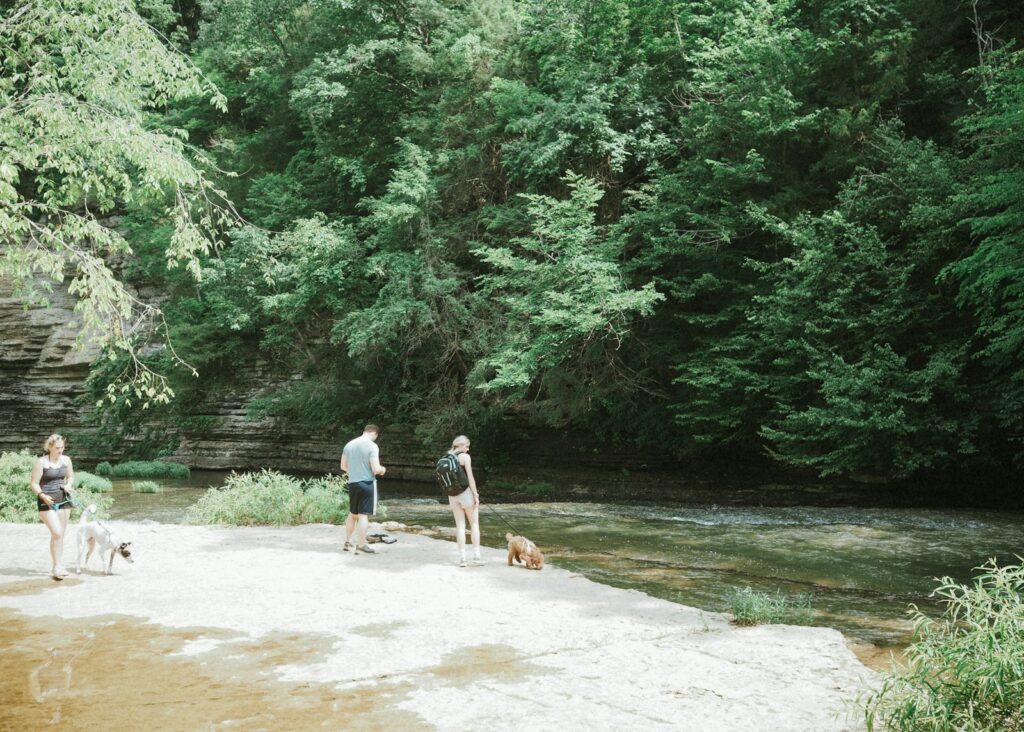America’s national parks offer some of the most breathtaking natural landscapes in the world, and many welcome our four-legged companions to share in the adventure. While not all parks are created equal when it comes to dog access, several stand out for their pet-friendly policies and accommodations. From scenic coastal parks to majestic mountain ranges, these destinations allow you and your furry friend to create unforgettable memories together in America’s natural treasures. Before embarking on your journey, it’s important to understand which parks offer the best experience for both you and your canine companion, as well as the specific rules that ensure both wildlife protection and pet safety.
Acadia National Park: A Coastal Paradise for Pups

Located on Maine’s rugged coast, Acadia National Park stands as one of the most dog-friendly national parks in the country, with over 100 miles of hiking trails and 45 miles of carriage roads open to leashed dogs. The park’s diverse terrain offers everything from woodland paths to rocky coastlines, providing varied sensory experiences for curious canines. Dogs can join their owners on the free Island Explorer shuttle buses that connect various parts of the park during the summer and fall seasons. Acadia even features several beaches where dogs are permitted during specific times of the year, allowing them to splash in the Atlantic Ocean after a day of hiking.
Grand Canyon National Park: Limited but Spectacular Access

While the Grand Canyon restricts dogs from most below-rim trails, the South Rim Trail provides an excellent 13-mile paved pathway where leashed dogs can take in breathtaking views of one of the world’s natural wonders. The Rim Trail offers numerous viewpoints and is accessible year-round, making it perfect for photo opportunities with your four-legged friend. The park’s developed areas, campgrounds, and picnic areas also welcome pets, creating comfortable spaces for rest between adventures. For visitors planning extended explorations of areas where dogs aren’t permitted, the South Rim offers kennels where pets can stay safely during the day (though advance reservations are strongly recommended).
Shenandoah National Park: A Dog Hiker’s Dream

Shenandoah National Park in Virginia stands out as one of the most accommodating national parks for dog owners, allowing leashed pets on over 480 miles of trails, including segments of the famous Appalachian Trail. The park’s varied terrain offers everything from gentle woodland walks to more challenging mountain climbs, with many trails featuring streams where dogs can cool off during warmer months. Fall visits are particularly spectacular as the Blue Ridge Mountains burst into a canvas of red, orange, and gold foliage, creating a sensory wonderland for both humans and dogs. Shenandoah’s pet-friendly lodges and campgrounds make it possible to plan multi-day adventures without boarding your canine companion.
Cuyahoga Valley National Park: Midwest Dog-Friendly Haven

Ohio’s Cuyahoga Valley National Park offers an exceptional dog-friendly experience with nearly all of its 125+ miles of trails open to leashed pets. The park’s centerpiece Ohio & Erie Canal Towpath Trail provides a level, 20-mile path perfect for leisurely walks with dogs of all abilities and energy levels. Numerous picnic areas throughout the park welcome four-legged visitors, making it easy to plan full-day outings with your pet. The park’s proximity to Cleveland and Akron makes it an accessible option for urban dog owners seeking nature without extended travel, and its year-round accessibility ensures canine adventures regardless of season.
Yosemite National Park: Limited but Magnificent Options

While Yosemite restricts dogs from wilderness trails, the park still offers significant opportunities for pet owners with paved paths in developed areas where leashed dogs are welcome. The 12-mile paved loop through Yosemite Valley provides stunning views of iconic landmarks like El Capitan and Yosemite Falls, accessible to dogs and their owners. Pets are also permitted in all developed campgrounds (except walk-in campgrounds and group sites), making Yosemite a viable option for camping with your canine. For visitors hoping to explore pet-restricted areas, the park offers kennel services at Yosemite Valley from spring through fall, though space is limited and reservations are essential.
Great Sand Dunes National Park: Unique Desert Experience

Great Sand Dunes National Park in Colorado offers a truly unique environment where leashed dogs can actually join their owners on the main dunefield, a rare opportunity in the national park system. The soft sand provides a different sensory experience for dogs, though morning or evening visits are recommended during summer months when midday sand temperatures can exceed 150°F and harm sensitive paw pads. Medano Creek, which flows seasonally at the base of the dunes, creates a natural water play area where dogs can cool off after dune adventures. The park’s pet-friendly campground makes it possible to extend your stay and explore this distinctive landscape at different times of day.
Olympic National Park: Coastal Access for Canines

While Olympic National Park limits dogs from most trails, it offers exceptional coastal access with nearly all of its beaches open to leashed pets. The dramatic coastline features tide pools, driftwood, and scenic views that create memorable experiences for both species. Kalaloch and Ruby Beach areas are particularly popular with dog owners, offering miles of walkable shoreline and stunning Pacific Ocean vistas. The park’s campgrounds and picnic areas also welcome dogs, providing comfortable spaces for overnight stays or day visits with your four-legged companion.
White Sands National Park: A Desert Playground

The glistening white gypsum dunes of White Sands National Park in New Mexico create a surreal landscape that’s largely open to leashed dogs. The park’s Dune Life Nature Trail and Interdune Boardwalk allow dogs, offering educational opportunities alongside exercise for both human and canine visitors. The cool, soft texture of the gypsum sand is generally comfortable for dogs’ paws, even in warmer weather, unlike traditional sand that can become scorching. Sledding down the dunes is a popular activity that many dogs enjoy watching or even participating in alongside their owners, creating unique memories impossible to replicate elsewhere.
Mammoth Cave National Park: Above-Ground Adventures

While dogs cannot enter the famous cave system, Mammoth Cave National Park in Kentucky offers over 70 miles of surface trails where leashed pets are welcome. The park’s diverse woodland environment provides sensory-rich experiences for dogs, with varied terrain and abundant wildlife scents to investigate. Pet-friendly campgrounds make multi-day explorations convenient, with the option of alternating cave tours with dog-friendly surface hikes. The Green River runs through the park, creating scenic riverside trails and occasional water access points where dogs can cool off during warmer months.
Petrified Forest National Park: Ancient Landscapes with Modern Pet Policies

Arizona’s Petrified Forest National Park stands out for allowing leashed pets on all park trails and even in the visitor centers, a rarity in the national park system. The park’s main attractions—colorful badlands and ancient petrified logs—are all accessible with your dog at your side, eliminating the need to alternate activities. The relatively short trails (most under two miles) make this park manageable even for dogs with limited stamina or in warmer weather. The park’s otherworldly landscape provides a unique backdrop for photos with your four-legged friend that will stand out in any vacation album.
Hot Springs National Park: Urban Accessibility

Hot Springs National Park in Arkansas offers a unique blend of natural and urban experiences, with leashed dogs welcome on all 26 miles of trails and even on the Grand Promenade walkway through the historic bathhouse district. The park’s location adjacent to the city of Hot Springs creates convenient access to pet-friendly restaurants and accommodations, making logistics easier for traveling dog owners. While pets cannot enter bathhouse buildings, the park’s accessible design means that humans and dogs can enjoy most outdoor attractions together without separation. The varied trail system ranges from easy strolls to more challenging mountain climbs, accommodating dogs of different fitness levels.
Essential Tips for National Park Visits with Dogs

Preparation is key when bringing dogs to national parks, starting with a pre-trip vet visit to ensure your pet is current on vaccinations and in good health for travel. Always pack ample supplies including collapsible water bowls, extra water, waste bags, a first aid kit, and familiar food to avoid digestive upset during your adventure. Understanding and respecting wildlife safety is crucial—keep dogs leashed at all times (typically six feet or shorter) to protect both native animals and your pet from dangerous encounters. Consider your dog’s fitness level and temperature tolerance when planning activities, scheduling hikes during cooler morning or evening hours in summer months and being aware of signs of fatigue or overheating.
Understanding National Park Pet Policies

National Park pet policies exist for important conservation reasons, including protecting wildlife from disturbance, disease transmission, and potential predation. These regulations also safeguard native plant communities from damage and contamination from waste or introduced seeds. Even well-behaved dogs can unknowingly disrupt delicate ecosystems or trigger stress responses in wildlife that may not be immediately visible to owners. Before visiting any national park, check the specific park’s website for current pet policies, as regulations can change seasonally or in response to wildlife management needs. Most parks require dogs to remain on leashes six feet or shorter at all times, and pet waste must always be collected and disposed of properly—never left bagged on the trail.
America’s national parks offer incredible opportunities for creating lasting memories with your canine companion while experiencing some of the country’s most spectacular natural wonders. From the coastal trails of Acadia to the white dunes of New Mexico, these dog-friendly destinations demonstrate that outdoor adventure and responsible pet ownership can go hand in hand. By understanding park regulations, preparing appropriately, and respecting both the natural environment and fellow visitors, you and your four-legged friend can enjoy America’s best idea together. As interest in outdoor recreation with pets continues to grow, national parks are increasingly recognizing the importance of accommodating the special bond between people and their dogs, creating more inclusive spaces for all members of the family—including those with paws.

